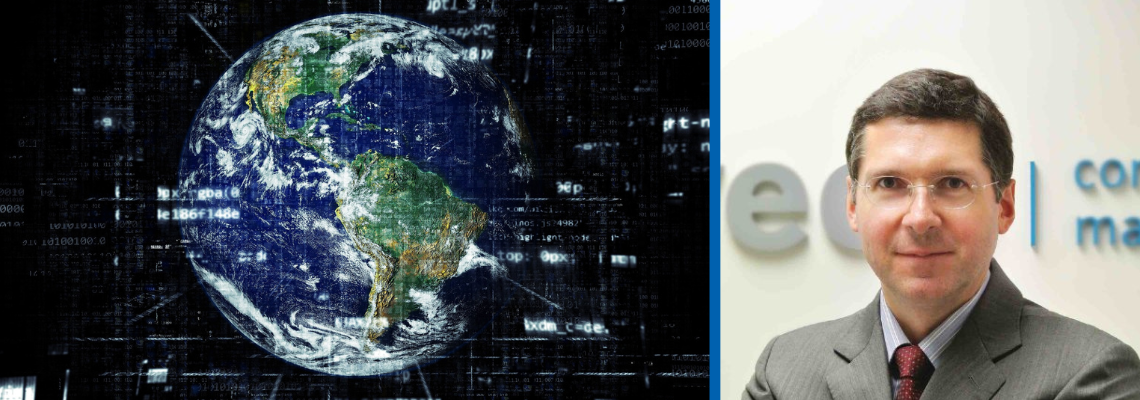ESG has become a buzz phrase in the sustainability sector but what does it mean for water? Bruno Lhopiteau writes from China on the importance of trusted data to help with reporting.
Jumping on the ESG bandwagon
Despite some pushback, Environmental, Social & Governance (ESG) is going strong. In 2022, when Tesla was removed from the S&P 500 ESG Index, Elon Musk tweeted that ESG was “a scam”. The company’s Impact Report 2021 described ESG evaluation as “fundamentally flawed”, focused on investment risk rather than environmental impact.
Evaluation metrics are likely to change over time, so are acronyms dreamed up by global marketers. If greenwashing is nothing new, neither are the fundamentals of ESG and sustainability.
Aspiring unicorns that survived the IoT and Digital Twin craze started rebranding their solutions as ESG.
Unsurprisingly, digital solution providers have joined the ESG bandwagon. Aspiring unicorns that survived the IoT and Digital Twin craze, realizing that the ‘Smart Water’ tap might soon get turned off, started rebranding their solutions as ESG and updated their website accordingly. Not that there is anything wrong with business acumen and marketing sense. Yet, there is also little doubt that technology can be an enabler of better sustainability practices.
ESG focuses on greenhouse gas emissions, either directly measurable (with the help of IoT) or calculated based on energy consumption (again IoT with rather simple formulas applied). Embedded carbon calculations are mostly one-off during construction and rely on studies by specialized consultants.
In the ‘social’ element of ESG, safety should be paramount, for which companies and regulators already have clear KPIs. Other less tangible aspects rely on manual inputs or narrative.
Monitoring is easy; execution is hard
As well as reducing carbon consumption, there is a need to optimize the energy mix. In most buildings or plants, energy represents over 70 per cent of the carbon footprint.
Often, ESG-branded software will collect data and allows addition input of various parameters.
Unsurprisingly, for those of us involved in operation & maintenance (O&M), the key is not to monitor KPIs but to manage the many technical actions taken to improve, to correct problems and prevent them from reoccurring. In the scientific method or PDCA cycle (plan, do, check & act), the plan, do and adjust matter as much as check.
Often, ESG-branded software will collect data from IoT and existing SCADA sensors and allows additional input of various parameters. A few simple mathematical formulas (which a clever marketer may be tempted to call AI) calculate the CO2 equivalent.
A business intelligence tool is employed to display trends and KPIs, with cute animations and fancy backgrounds. In large corporations, KPIs are standardized, escalated, and consolidated globally for reporting and benchmarking.
Once fundamentals are managed, ESG reporting is the easy part.
When it comes to monitoring, this could be seen as the easy part, with low barrier to entry. In fact, many companies simply use existing business intelligence and SCADA tools. Commercial ESG software may help multinationals that have global deployment needs, usually a top-down decision.
Certain suppliers emphasize the marketing aspects and may run joint PR activities together with their clients for mutual benefits. It’s perhaps an example of a less tangible approach decried by Elon Musk.
Furthermore, execution is always the hard part. It can’t be captured by sensors – it is done by people, which brings human nature’s shortcomings. From experience in Asia and Africa, this is especially true in less developed economies where “best practices” and experienced personnel are harder to find.
When “Plan”, “Do” and “Adjust” are missing, “Check” and the entire ESG system lacks trustworthiness. This could be classed as monitoring without improvement.
Ensuring trusted data in the field
Could digital technology help ensure regular filter cleaning, lubrication, and routine preventive actions often linked to double-digit energy savings?
One of my companies implemented such system for the wastewater plant at one of AstraZeneca’s largest sites in China. AstraZeneca is a leading member of the Alliance for Water Stewardship and is also working in India for the National Mission for Clean Ganga's Hybrid Annuity Model PPP project. And on a much bigger scale for the new Integrated Waste Treatment Facilities of Hong Kong’s Environmental Protection Department.
Incidentally, in our market, the “real environmental impact” close to Elon Musk’s heart, and to ours, is obviously the core business of treating water and waste.
Once fundamentals are managed, ESG reporting is the easy part. This is based on trusted data from the field, from sensors and from people.
About the author
Bruno Lhopiteau, a 22-year veteran of the Chinese utility market, founded maintenance consultancy Siveco China in 2004 and digital tech supplier Bluebee Technologies in 2013. In his spare time, Bruno lectures on Industrial Risk Management at Shanghai University, speaks at conferences, and writes contrarian articles.







